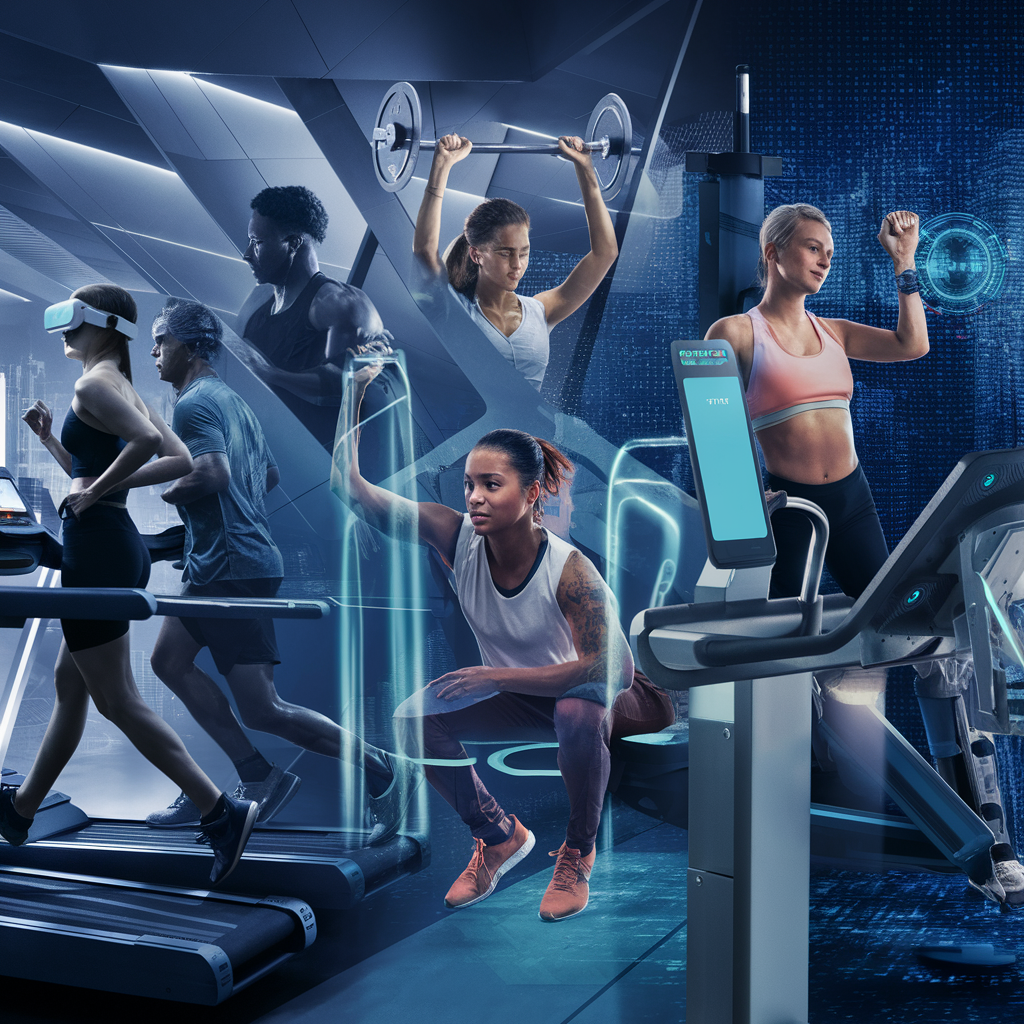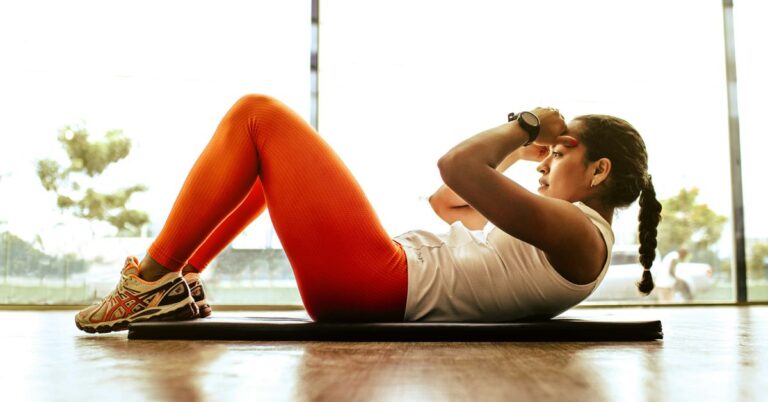How Technology is Shaping the Future of Fitness
In a world where technology seems to infiltrate every aspect of our lives, it’s hardly surprising that the fitness industry is feeling the impact. Gone are the days when a simple gym membership and a pair of sneakers were sufficient to keep us fit. Now, it’s a blend of smart devices, apps, and virtual classes that are redefining how we approach our health and exercise routines. But what does this mean for the average gym-goer, or even the fitness enthusiast? Well, let me take you on a journey through this tech-savvy fitness landscape.
The Rise of Wearable Technology
If you’ve ever seen someone jogging with a smartwatch on their wrist, you’ve witnessed the first wave of technology that’s reshaping fitness. Wearables, such as smartwatches and fitness trackers, are no longer just fancy gadgets; they’ve become essential tools in our quest for health. According to a recent report, the global market for wearable fitness technology was valued at over $20 billion in 2022 and is projected to grow significantly in the coming years. These devices track everything from steps taken to calories burned, heart rate, and even sleep patterns. It’s like having a personal trainer on your wrist, minus the motivational pep talks (though I must admit, some days I wouldn’t mind a little of that).
Take, for example, the ever-popular Fitbit. A few years ago, I decided to strap one on for a week to see if it would push me to be more active. I was amazed at how a simple notification reminding me to take a few steps could guilt me into moving. It’s a testament to how these devices have woven themselves into our daily routines. They provide real-time feedback, which can be a double-edged sword. On one hand, it’s motivating; on the other, it can sometimes feel like a relentless nagging voice in the back of your mind. “Did you really just sit for two hours straight?”
Fitness Apps: Your Digital Workout Partner
As if wearables weren’t enough, we now have an entire universe of fitness apps at our fingertips. With a simple tap on our smartphones, we can access personalized workout plans, nutrition guides, and even virtual coaching. From MyFitnessPal to Strava, these applications cater to all fitness levels and preferences. Some even offer social features that allow users to connect with friends and share their progress—because nothing feels quite as satisfying as showing off your workout achievements on social media, right?
I remember the first time I downloaded a workout app. I was skeptical about following a virtual instructor over my favorite local fitness class. However, the convenience of being able to work out at home, without the pressure of peers watching me struggle through burpees, was liberating. It’s a game-changer for those who might feel intimidated by the gym environment. Plus, many apps offer features like video demonstrations and community support, making them feel more engaging. You can sweat it out in your living room while your virtual instructor cheers you on from a screen—just don’t forget to mute if they start getting a bit too motivational for your taste!
The Boom of Online Fitness Communities
Speaking of community, one of the more profound shifts in the fitness world has been the rise of online fitness communities. With platforms like Peloton and Beachbody, people are no longer just buying a product; they are buying into a lifestyle. These platforms create a sense of camaraderie among users, even if they’re miles apart. You can join a live class and feel the energy of a room full of people—all from the comfort of your own home. There’s something oddly reassuring about seeing a group of strangers on a screen, all sweating together. It’s like a modern-day version of the workout buddy system, minus the awkward small talk.
However, it’s worth noting that these online communities have their pros and cons. While they can foster motivation and encouragement, they can also lead to comparison and feelings of inadequacy. “Why can’t I nail that yoga pose like she does?” or “How did he manage to run a marathon in under three hours?” These thoughts can creep in, especially when scrolling through social media feeds filled with perfectly toned bodies and inspirational quotes. The key is to remember that everyone’s fitness journey is unique—and that’s perfectly okay.
The Impact of Virtual Reality (VR) and Augmented Reality (AR)
Let’s take a leap into the future—literally. Virtual reality and augmented reality are beginning to make their mark in the fitness world. Imagine strapping on a VR headset and finding yourself in a tropical paradise while doing your squats. Sounds too good to be true? Well, it’s not. Companies are developing VR fitness programs that transport users to different environments, making workouts feel more like an adventure and less like a chore.
One notable example is Beat Saber, a VR game that combines rhythm and movement. Players swing lightsabers to the beat of the music, which not only gets your heart racing but also feels like more fun than exercise. Who knew that sweating profusely while slashing virtual blocks could be so captivating? It struck me that this might be the future of fitness for those who dread traditional workouts. Getting your cardio in while pretending to be a Jedi? Sign me up!
Nutrition Meets Technology
Of course, fitness isn’t just about movement; it’s also about what we put into our bodies. Enter technology’s role in nutrition. With apps that scan barcodes and analyze food items, tracking your diet has never been easier. Smart refrigerators can now remind you when you’re running low on healthy options, while meal-planning services can help you stick to your dietary goals.
Consider the rise of meal prep services like HelloFresh or Blue Apron. These companies deliver fresh ingredients right to your doorstep, along with easy-to-follow recipes. It’s a lifesaver for those of us who might struggle with meal planning or find ourselves reaching for takeout more often than we’d like. Sure, there’s an element of convenience, but there’s also a growing awareness about health and nutrition—technology is helping us make better choices, and that’s a win.
Artificial Intelligence and Personalization
As we look toward the future, artificial intelligence is poised to revolutionize how we approach fitness even further. Imagine a world where your workout is tailored specifically to your goals, preferences, and even your mood on a given day. AI-driven personal training apps are already making strides in this direction. They can analyze your past workouts, assess your performance, and modify your plans in real-time. It’s almost as though you have a personal trainer who knows you better than you know yourself!
One app, Freeletics, uses AI to create personalized workout plans that evolve based on your progress. I was amazed at how quickly it adapted to my fitness level, always pushing me just enough without leaving me gasping for air. However, it’s important to approach this technology with a healthy dose of skepticism. After all, machines don’t have our emotional nuances or personal stories. They can provide data, but the human element—the passion, the struggle, the triumph—still comes from within us.
The Gym Experience: A Blend of Traditional and Tech
As the tech wave sweeps through the fitness industry, what does the future hold for traditional gyms? It seems that fitness centers are embracing technology rather than shying away from it. Many gyms are incorporating smart equipment that tracks your workouts and provides instant feedback. Machines now come equipped with screens that not only show your progress but also offer virtual classes.
Walking into a modern gym feels like stepping into a scene from a sci-fi movie. I remember the first time I saw a treadmill that had a built-in screen displaying virtual trails. I felt like I was running through a scenic forest rather than plodding along in a stuffy gym. There is something undeniably cool about being able to select your environment while getting your sweat on. It’s as if technology is enhancing the gym experience, making it feel less monotonous.
The Challenges Ahead
But with all these advancements come challenges. Not everyone has access to high-end technology, and there’s a risk of widening the gap between those who can afford these conveniences and those who cannot. Additionally, there’s a growing concern about data privacy. As we share more of our health information with apps and devices, we must be vigilant about how this data is used and protected. These are vital questions that society needs to address as we move forward.
Moreover, as we become increasingly reliant on technology, we must not lose sight of the importance of physical activity. Technology is a tool, not a substitute for movement. The essence of fitness lies in the activity itself—whether it’s a heart-pumping workout, a leisurely stroll, or a dance party in your living room.
The Road Ahead: Balance is Key
As I reflect on the evolution of fitness technology, it strikes me that balance is key. Embracing the benefits of technology while maintaining a healthy relationship with fitness is essential. We must strive for a synergy between the digital and physical worlds, allowing technology to enhance our workout experience without overshadowing the joy of movement.
In conclusion, technology is undeniably shaping the future of fitness in profound ways. It offers us tools to track our progress, connect with others, and create personalized experiences like never before. However, as we embrace these innovations, let’s remember that fitness is ultimately about our well-being—both physically and mentally. The journey is uniquely ours, and while technology can guide us, it’s our passion, determination, and love for movement that will carry us forward.
So, whether you’re lacing up your sneakers for a run, strapping on your smartwatch, or logging into a virtual class, remember to enjoy the ride. After all, fitness should be a celebration of what our bodies can do, not just a series of data points on a screen. And who knows? Maybe one day we’ll be able to work out with holographic trainers in our living rooms. But until then, let’s embrace the technology we have and make the most of it!









